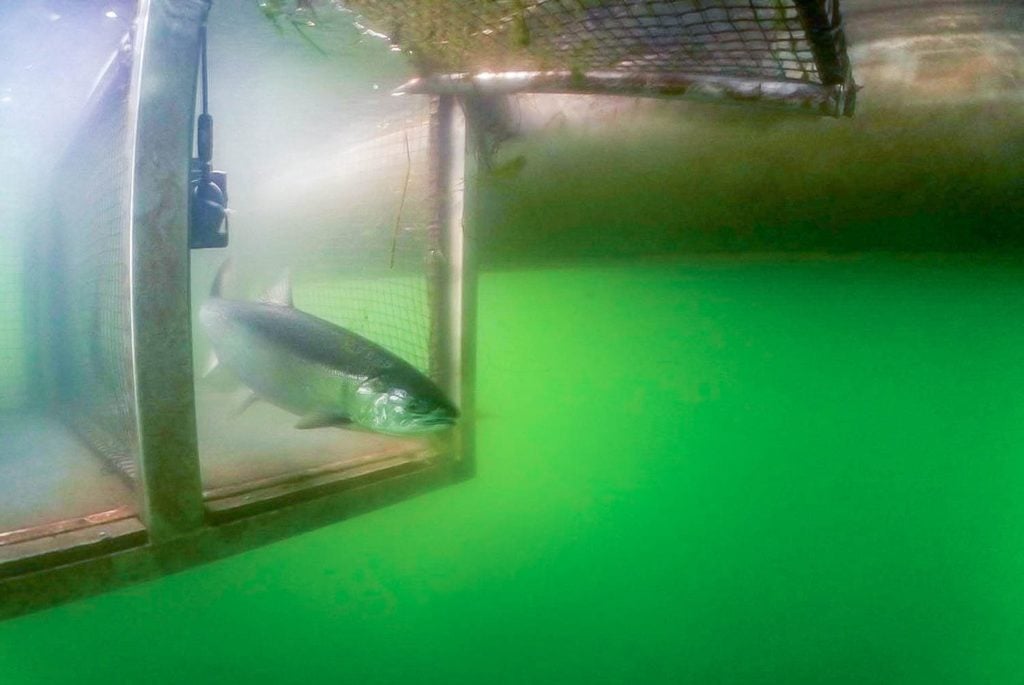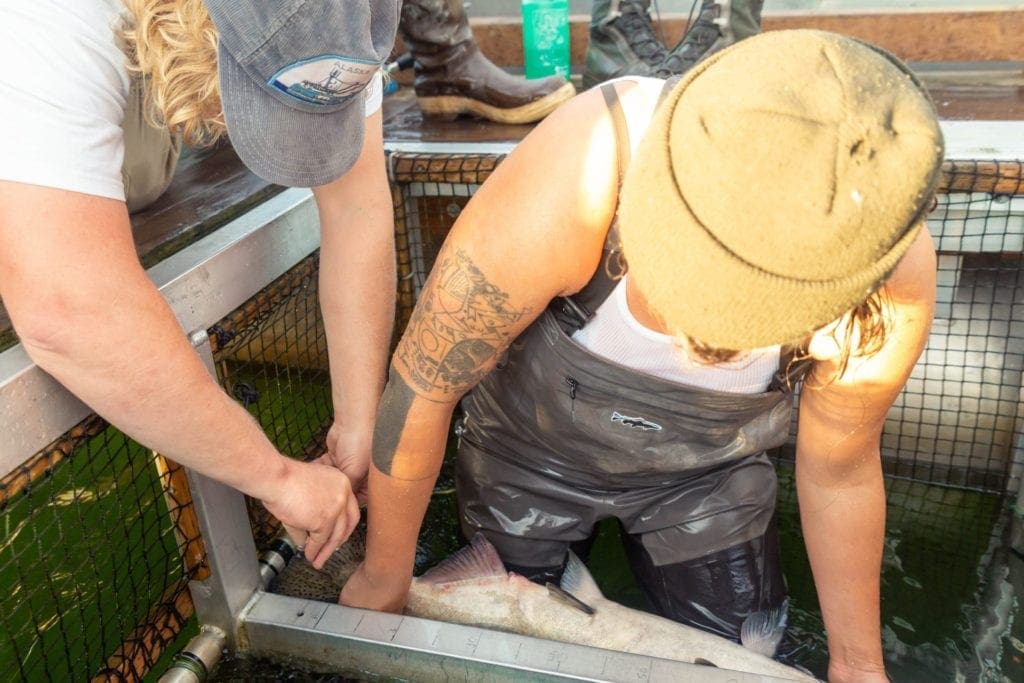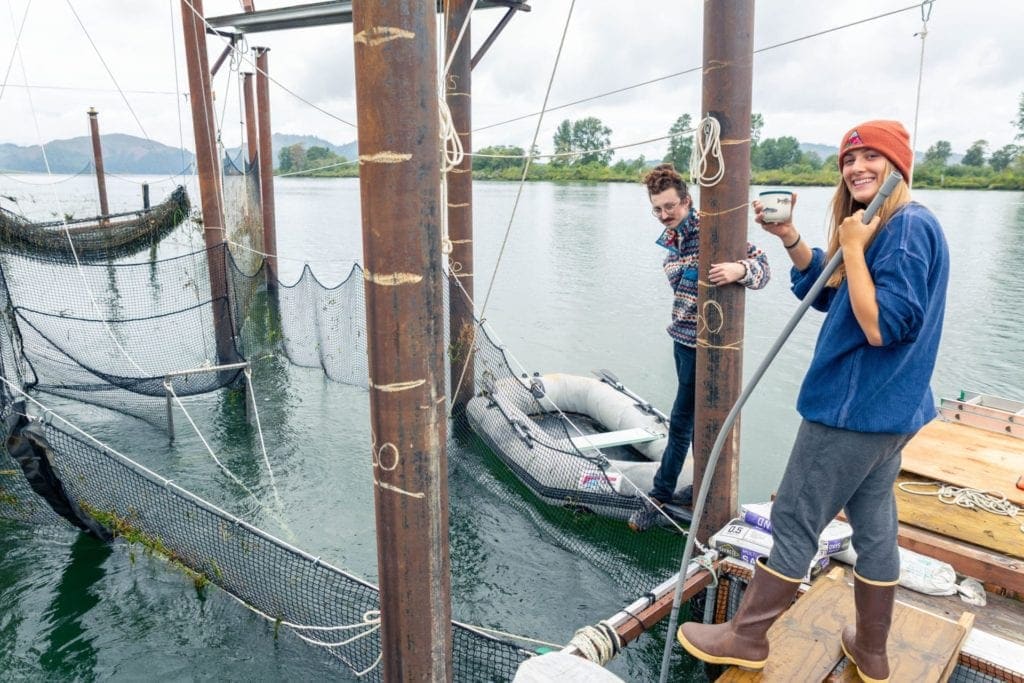Through the wind, rain and the beautiful early fall days, Wild Fish Conservancy and commercial fishing partner Billie Delaney continue to operate the new experimental fish trap near Clifton, Oregon. Building on six years of data collection at a prototype fish trap in Washington, this year’s research tests a new design at new location on the Columbia River. Our goals are to assess catch composition, bycatch encounters, and post-release survival from the modified trap design. The findings from this year’s research will help inform management decisions critical to the development and implementation of this exciting new selective fishing gear.
As research continues, WFC staff are finding ways to further improve the passive capture process. We have installed underwater cameras which allows biologists to document fish entering the trap and collect important data, such as the number of fish by species, and the absence or presence of an adipose fin (hatchery-origin or wild, respectively). With this improved approach, each fish is able to continue its upriver migration without us laying a finger on it. This sorting process all happens in a matter of seconds, providing an efficient means to capture and sort fish while reducing fish stressors such as net contact, overcrowding, and air exposure. The potential of this simple camera technology, which removes the need for human handling of fish, is extremely exciting from a harvest efficiency and conservation standpoint with enormous potential for use during both monitoring and selective harvest.
Check out the video below for an example of this passive, non-invasive process in action.
Using these cameras in a commercial fishing setting would allow trap operators to determine if a fish is from a targeted, harvestable population by identifying the species and checking for the presence/ absence of adipose fin without handling the catch or removing it from the water. After identification of species and stock, the fisher could then use a dip net to selectively harvest targeted fish or simply open a pivot door to passively release all non-targeted species such including protected wild salmon and steelhead. This technique is a massive improvement over conventional forms of bycatch release used in other commercial fisheries, which often involve picking wedged, entangled, or gilled fish out of nets.

As we head into fall, WFC staff continue to gather post-release survival data through two study designs. For coho salmon, we are continuing with a 6-day net pen holding method and for Chinook salmon and steelhead trout, we are continuing our PIT tagging effort for the mark recapture study. This research, described in the previous blog post, will help inform management on post release survival of salmon and steelhead migrating through a fish trap and captured via the new passive method.

It has been a great season so far. We look forward to providing more updates as the data gathering continues.

Join our mailing list to recieve important updates on our work, the latest wild fish news, & opportunities to take action to support wild fish.
This site is protected by reCAPTCHA and the Google Privacy Policy and Terms of Service apply.
Wild Fish Conservancy is recognized as a 501(c)3 non-profit by the IRS